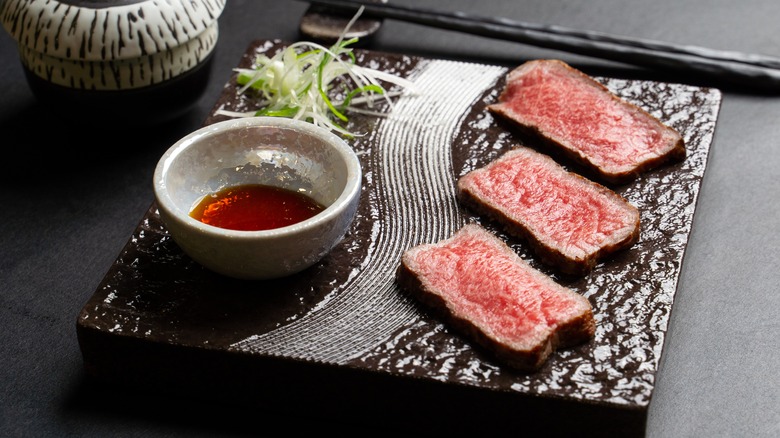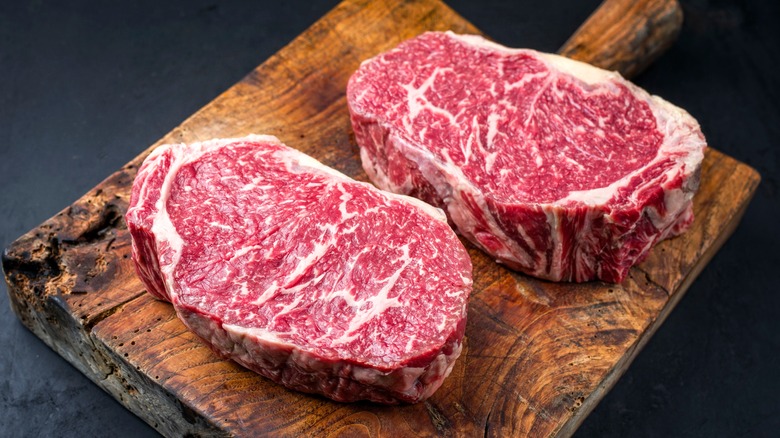How Japanese A5 Wagyu Beef Receives The Highest Grade In Its Class
As you might have guessed by its prices on restaurant menus, Wagyu beef is something special. It's well-prized for its heavy marbling and incredibly delicate texture, and diners often pay big to experience a bite for themselves.
Because wagyu beef is so coveted, a strict classification system was implemented to track which beef is the real deal. It's also used to help higher-grade beef stand out even more from the pack.
According to The Wagyu Shop, this process is handled by the rigid Japanese Meat Grading Association. The grade is determined by two factors: yield and grade. The yield is determined by the weight of the meat compared to the weight of the carcass. This factor is represented by a letter, with the highest available being an A. The grade is then determined by a number between zero and five, where five is the best. This is measured by examining the marbling, color, fat, firmness, and texture. It takes perfect scores across the board to earn the coveted A5 grade that signifies the highest standard of Wagyu beef. Wagyu is held to an incredibly high standard, and Japanese vendors won't even sell anything that scores below an A3.
What even is wagyu beef?
Understanding what makes A5 Wagyu so special also includes understanding Wagyu itself. Often Wagyu and Kobe beef are grouped into the same category. These terms aren't interchangeable, but they are closely related.
Wagyu is the term that refers to a specific breed of Japanese cattle. Kobe beef is the term used for Wagyu beef from the Hyogo prefecture in Japan. While all Kobe beef is Wagyu, not all Wagyu is Kobe. Kobe has a particular definition because it is often the highest quality of Wagyu beef with a grade of four or five.
Wagyu's unique marbling comes from the characteristics of the cows. Wagyu cattle have special properties that create a more uniform fat quality throughout their musculature. This creates the unique signature marbling that gives Wagyu its incredibly savory flavor. The abundant fat also melts at a lower temperature, creating a highly juicy steak with just a quick sear.
How to find the best quality wagyu
There might be restaurants bragging about their Wagyu burger or steak nationwide, but most aren't the real deal. Kobe beef, especially the A5, is under strict regulations. Forbes says that as of 2018, Japan had exported no more than 600 pounds of Kobe beef since it began allowing American imports six years earlier. As of 2020, less than 40 American restaurants were certified to serve it. The easiest way to get real Kobe beef is probably to go to Japan.
If that's the case, though, where is all this knockoff Wagyu and Kobe coming from? Kobe and Wagyu cattle have been exported and crossbred to produce cheaper cuts of beef called "Kobe-style" or Wagyu beef without meeting the usual qualifications.
The few places that have received the proper certification have even taken extreme measures to prove it. Disney Springs' Wagyu beef certification stirred some strong feelings on social media. Not only was it selling A5 beef, but it included the name of the cow it came from, where it lived, and an ink print of its nose to show that it was the real deal.


